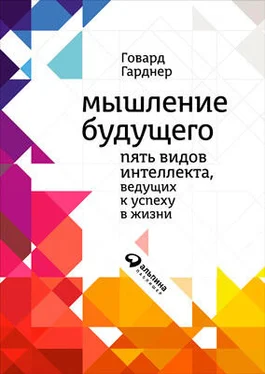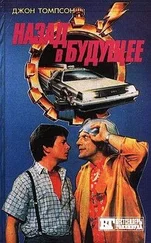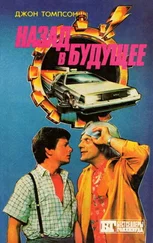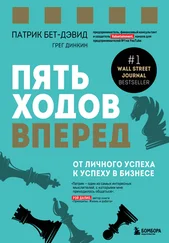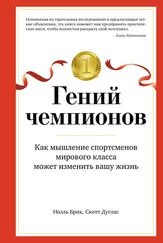Jim Collins, Good to Great and the Social Sectors (Boulder, CO: Jim Collins, 2005).
Peter Galison, Einstein’s Clocks, Poincare’s Maps: Empires of Time (New York: Norton, 2004).
Bill Bryson, A Short History of Nearly Everything (New York: Broadway, 2003), 1.
Там же, с. 476.
Ken Wilber. A Brief History of Everything (Boston: Shambhala, 1996), 16.
Ken Wilber, The Essential Ken Wilber (Boston: Shambhala, 1998), 7.
Wilber, A Brief History of Everything, 42.
Wilber, The Essential Ken Wilber, 113.
C. P. Snow, The Search (London: Penguin, 1950), 243.
John Gardner (1912–2002) was an outstanding American public servant.We were not related.
Steven Johnson, «Tool for Thought,» New York Times Book Review, January 30, 2005, end piece.
Richard Light, Making the Most of College (Cambridge, MA: Harvard University Press, 2001).
Edward O. Wilson, Consilience (New York: Knopf, 1998).
Vartan Gregorian, «Colleges Must Reconstruct the Unity of Knowledge,» Chronicle of Higher Education , June 4, 2004, B-12.
Quoted in David Remnick, «The Wanderer,» The NewYorker, September 18, 2006, 65.
Edward de Bono, Lateral Thinking (New York: Harper, 1973).
Mihaly Csikszentmihalyi, Creativity (NewYork: Harper Collins, 1996).
John Maynard Keynes, The General Theory of Employment, Interest, and Money (1936; repr., New York: Prometheus, 1977).
Quoted in Howard Gardner, Artful Scribbles (NewYork: Basic Books, 1982) 8.
Howard Gardner, To Open Minds: Chinese Clues to the Dilemma of American Education (NewYork: Basic Books, 1989).
Teresa Amabile, How to Kill Creativity (Boston: Harvard Business School Press, 2000).
Bethany McLean and Peter Elkind, The Smartest Guys in the Room (New York: Viking, 2004).
Jeffrey Immelt, «Growth as a Process: The HBR Interview,» Harvard Business Review, June 2006.
Gary Taubes, Bad Science: The Short Life and Weird Times of Cold Fusion (New York: Random House, 1993), xviii.
Там же, с. 112.
Там же, с. 72–73.
Richard Florida, The Rise of the Creative Class (New York: Basic Books, 2003).
Bill Joy, Why the Future Doesn’t Need Us: How 21st Century Technologies Threaten to Make Humans an Endangered Species (New York: Random House Audio, 2006).
Michael Balter, «First Jewelry? Old Shell Beads Suggest Early Use of Symbols,» Science 23, no. 5781 (2006): 1731.
Имеется в виду Мюнхенский сговор – соглашение, подписанное в Мюнхене 30 сентября 1938 года главами крупнейших европейских государств. Соглашение касалось передачи Германии Чехословакией Судетской области. – Прим. ред.
W. H. Auden, «September 1, 1939.»
Margaret Talbot, «The Baby Lab: How Elizabeth Spelke Peers into the Infant Mind,» The NewYorker, September 4, 2006.
Vivian Paley, You Can’t Say You Can’t Play (Cambridge, MA: Harvard University Press, 1993).
Знаменитый судебный процесс 1954 года, положивший конец расовой дискриминации в американских школах; к данному прецеденту апеллировали позднейшие источники антидискриминационного законодательства. – Прим. ред.
Yarrow Dunham, A. S. Baron, and M. R. Banaji, «From American City to Japanese Village: A Cross-Cultural Investigation of Implicit Race Attitudes,» Child Development (forthcoming).
Sara Lawrence-Lightfoot, Respect (New York: Perseus Books, 1999).
James Atlas, Bellow: A Biography (New York: Modern Library, 2002), 574.
Robert Payne, The Life and Death of Mahatma Gandhi (1969; repr. New York: Dutton, 1995), 412.
Niall Ferguson, Empire (New York: Penguin, 2004), 335.
Amy Edmondson, R. Bohmer, and G. Pisano, «Speeding Up Team Learning,» Harvard Business Review, October 2001.
Such books include J. R. Huizenga, Cold Fusion: The Scientific Farce of the Century (NewYork: Oxford University Press, 1994); Eugene F. Mallove, Fire from Ice: Searching for the Truth Behind the Cold Fusion Furor (New York: John Wiley, 1991); Bart Simon, Undead Science (New Brunswick, NJ: Rutgers University Press, 2002); and Taubes, Bad Science.
John Seely Brown, «Towards Respectful Organization» in Organizations as Knowledge Systems, ed. Haridimos Tsoukas and Nikolaos Myolonopoulus (Houndmills, UK: Palgrave Macmillan, 2003).
Rodney Kramer, «The Great Intimidators,» Harvard Business Review, February 2006.
Samuel Oliner, Altruistic Personality (New York: Touchstone, 1992).
Daniel Barenboim and Edward W. Said, Parallels and Paradoxes: Explorations in Music and Society (New York: Pantheon, 2002), 6, 10, 11.
Alan Riding, «Harmony Across the Divide,» New York Times, August 20, 2006, Arts and Leisure, 1.
Там же.
See www.silkroadproject.org/press/faq.html.
See Rudy Govier and WilhelmVerwoerd, «Trust and the Problem of National Reconciliation,» Philosophy of the Social Sciences 32, no. 3 (2002): 187–205; Priscilla B. Hayner, «Fifteen Truth Commissions, 1974–1994: A Comparative Study,» Human Rights Quarterly 16, no. 4 (1994): 597–655; Charles O. Lerche, «Truth Commissions and National Reconciliation: Some Reflections on Theory and Practice,» http://www.gmu.edu/academic/pcs/LERCHE7lPCS.html; and Martha Minow, Between Vengeance and Forgiveness: Facing History After Genocide and Mass Violence (Boston: Beacon Press, 1998).
Lerche, «Trutn Commissions and National Reconciliation.»
Minow, Between Vengeance and Forgiveness.
Читать дальше
Конец ознакомительного отрывка
Купить книгу
